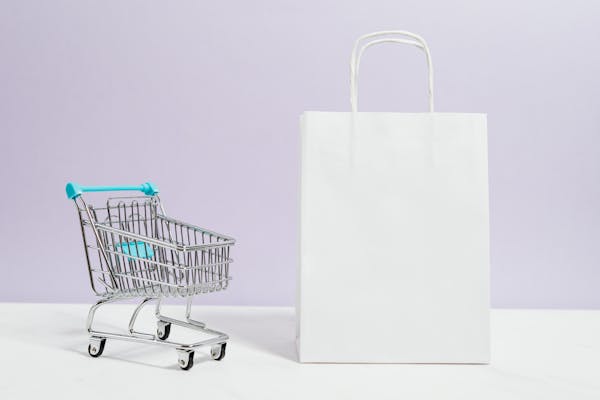
In a globe loaded with tempting sales, limited-time deals, and instant gratification, welcoming a " no-buy " challenge can feel both extreme and revitalizing. Yet in 2025, this monetary pattern is gaining momentum not just as a momentary experiment yet as a lasting strategy for developing conscious practices and real cost savings. Whether you're intending to clear financial debt, expand your reserve, or just realign with your financial goals, the no-buy difficulty provides more than just a break from spending. It provides clearness.
What Is a No-Buy Challenge and Why Is It Trending?
A no-buy difficulty is precisely what it sounds like: an individual dedication to quit buying non-essential items for a particular period of time. This can be as short as a weekend or as enthusiastic as a whole year. Individuals commonly limit acquisitions to fundamentals like groceries, lease, and transportation, while saying no to takeout, online purchasing, brand-new clothes, and impulse buys.
What makes the no-buy obstacle especially relevant in 2025 is its countercultural energy. After years of rising cost of living, supply chain problems, and changing financial self-confidence, consumers are reevaluating what's absolutely worth their money. Individuals are not only aiming to save they're looking to reclaim control.
Understanding Your " Why " Before You Begin
Beginning a no-buy challenge without purpose is like triggering on a road trip without any location. You'll likely delay. To succeed, you require a clear understanding of your inspiration. Are you saving for a down payment? Attempting to eliminate financial obligation? Wanting to develop far better habits around money?
As soon as you define your " why, " the challenge changes from an economic limitation into an encouraging way of living decision. It's not regarding penalty-- it's concerning choosing something bigger.
The Psychological Shift That Happens When You Pause Spending
One of one of the most unanticipated incentives of a no-buy challenge is how it reshapes your connection with cash. When you step off the intake treadmill, you begin to see the distinction in between emotional spending and intentional investing. You may find that purchasing a new sweatshirt doesn't really fix a difficult week-- or that your Saturday coffee routine has actually been even more regarding routine than pleasure.
This way of thinking change isn't simply thoughtful-- it straight impacts your financial resources. Small leaks in your spending plan become visible. Still registrations get canceled. Everyday behaviors come to be options, not defaults. It's in these peaceful moments of representation that the genuine cost savings start to build up.
Exactly How to Navigate Social Pressure and Stay on Track
Let's face it-- stating & ldquo; I'm doing a no-buy” challenge " can be met complication, curiosity, or perhaps resistance. Close friends may motivate you to " treat on your own, " or concern why you're skipping out on breakfast or the most recent tech decrease. The key is not to separate yourself, yet to interact your objectives clearly and with confidence.
Think about reframing the discussion. Rather than claiming you " can't spend, " claim you're & ldquo; focusing on lasting goals. " Instead of preventing gatherings, use budget-friendly options. You're not losing out you're redefining what " worth it " really indicates to you.
What to Expect Month by Month
In the first month, interest is high. You'll most likely feeling honored, perhaps even unstoppable. You track your savings. You discover fewer packages at your door. However by month 2 or 3, the initial momentum could discolor. That's when structure becomes crucial.
This is the time to revisit your goals, change your limits, and also journal your ideas. Reflect on what has felt hardest and what has amazed you. With time, your costs causes come to be more clear. You learn how to navigate them not just during the challenge, but for the rest of your life.
Turning Savings Into Strategy
It's one thing to stop spending. It's another to give those unused bucks an objective. As your no-buy trip proceeds, begin redirecting your cost savings into areas that align with your bigger economic objectives.
If you've been desiring for a home, currently may be the time to explore home lending choices and established sensible cost savings criteria. If you're a small company owner or freelancer, funneling your added funds right into a business checking account can prepare you for growth and unexpected expenses.
And if you're thinking about growing origins in Colorado, getting in try these out touch with Greeley mortgage lenders could bring you one action better to turning savings into a home.
What You Learn When You Spend Less
The no-buy obstacle isn't nearly—cash-- it's regarding values. You learn what you absolutely require. You recognize exactly how typically spending is tied to feeling, routine, or social expectation. And most importantly, you uncover that your sense of delight, convenience, and self-regard isn't connected to your ability to store. This is a difficulty that leaves you changed. When it finishes, you may not hurry back to your old routines. You may acquire with even more care. You might feel much better prepared for life's unanticipated turns. You may also inspire others to join you.
Adhere to the blog for even more wise financial savings ideas and practical devices to make 2025 your most financially equipped year yet.
 Spencer Elden Then & Now!
Spencer Elden Then & Now! Shane West Then & Now!
Shane West Then & Now! Nancy Kerrigan Then & Now!
Nancy Kerrigan Then & Now! Phoebe Cates Then & Now!
Phoebe Cates Then & Now! Ricky Schroder Then & Now!
Ricky Schroder Then & Now!